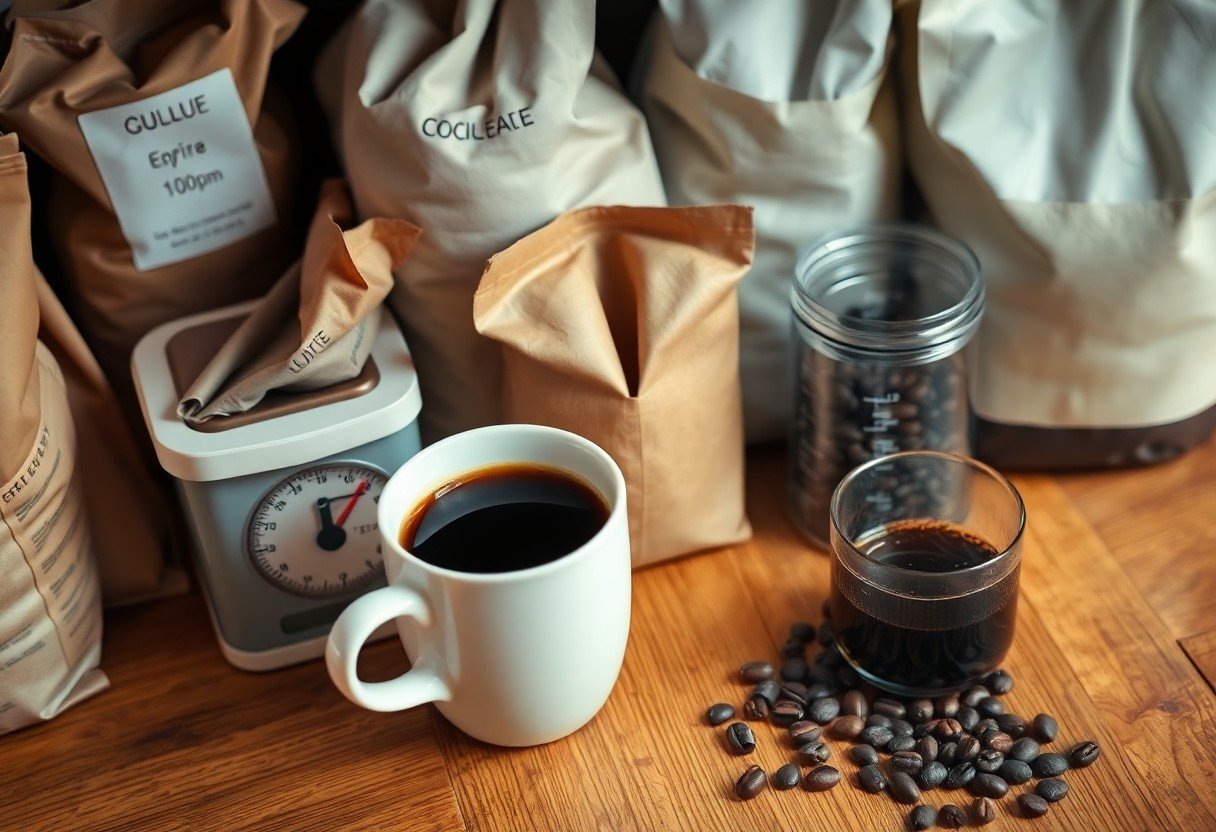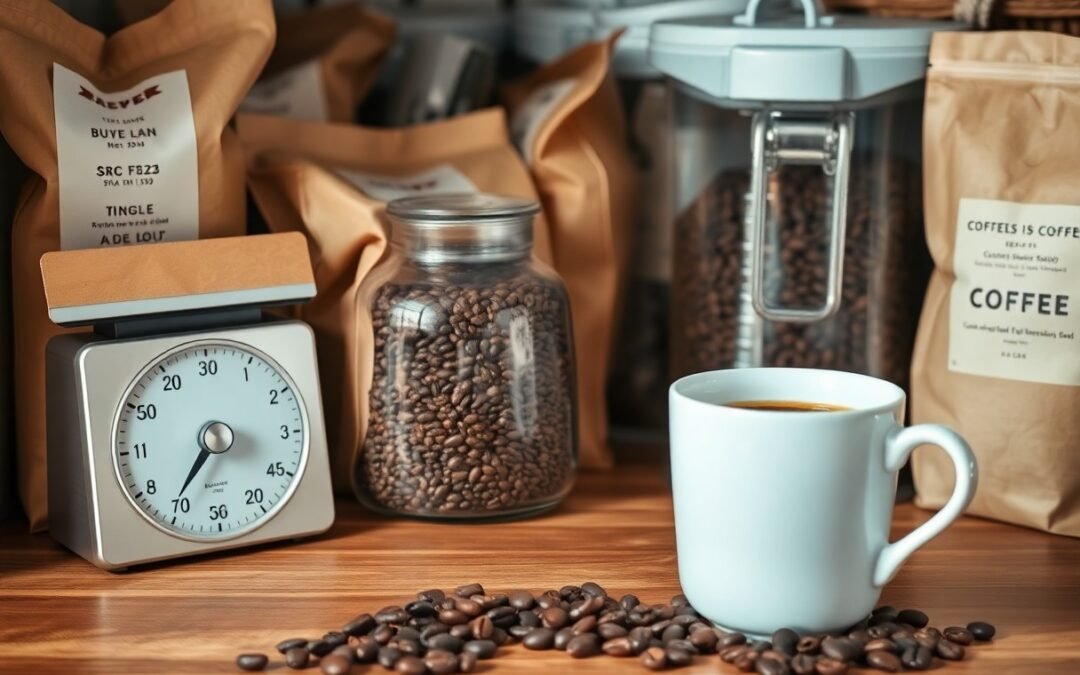Just because you’ve opened a bag of coffee beans doesn’t mean they’ll lose their flavor immediately. Understanding how to store your coffee beans properly can significantly extend their freshness and taste. In this post, you’ll learn about the lifespan of opened coffee beans, the best storage methods, and tips to keep your coffee tasting vibrant. Whether you’re a casual drinker or a dedicated coffee enthusiast, knowing how to handle your beans ensures every cup is as delightful as the first.
The Lifecycle of Coffee Beans Post-Opening
Once coffee beans are opened, their journey takes a swift turn as they start to interact with the surrounding environment. The exposure to air, moisture, light, and heat initiates a natural decline in their freshness and flavor profile. While beans can retain their quality for a few weeks, the clock starts ticking immediately as these factors begin to degrade their important oils and compounds.
The Chemical Changes That Occur
After opening, coffee beans undergo several chemical changes that negatively impact their taste and aroma. Oxidation begins almost immediately, which leads to a breakdown of oils and the formation of stale flavors. Essential aromatic compounds dissipate quickly in the presence of air, making your once-vibrant beans taste flat or bitter within just a few days to weeks.
The Influence of Roasting Date
The roasting date of your coffee beans plays a pivotal role in determining their lifespan post-opening. Coffee beans typically achieve peak freshness within a window of 3 to 10 days after roasting, when they are at their most aromatic and flavorful. As days pass, even more subtle nuances begin to fade, accentuating the importance of consuming them closer to their roast date for the best experience.
Freshness hinges on both the beans’ roast date and your storage method. For instance, if you purchase a bag roasted a month ago, the optimal flavor experience will inevitably diminish over time. Ideally, aim for beans roasted no longer than a week prior to your consumption. By prioritizing freshness and aligning your brew schedule with the roasting timeline, you can fully appreciate the complex flavors and aromas your beans are meant to offer, ensuring your coffee ritual remains a satisfying one.
Optimal Storage Techniques for Longevity
Storing coffee beans properly can significantly extend their freshness and flavor. Keeping beans away from light, air, moisture, and heat is fundamental. By using suitable storage methods, you’ll ensure that each brew delivers a rich and satisfying taste, even well past the opening date. Let’s explore the best practices to preserve the quality of your coffee beans.
Ideal Container Choices
Your choice of container greatly impacts the longevity of coffee beans. Opt for airtight containers made of glass, ceramic, or stainless steel. Such materials prevent exposure to air while blocking out light. Avoid plastic bags as they tend to let in air, causing beans to stale quicker. If you want to go the extra mile, consider a vacuum-sealed storage option for maximum freshness.
Temperature and Humidity Considerations
Managing the temperature and humidity around your coffee storage is necessary for retaining flavor. Ideally, you should store your coffee beans in a cool, dry place, away from direct sunlight and heat sources. Temperatures between 60°F and 75°F (15°C to 24°C) are optimal, while humidity levels should remain below 70% to prevent moisture exposure.
Temperature and Humidity Table
| Optimal Temperature Range | 60°F – 75°F (15°C – 24°C) |
| Recommended Humidity Level | Below 70% |
Storing coffee beans in fluctuating temperatures can lead to condensation, which exposes your beans to moisture and accelerates the deterioration process. For best results, a pantry or a dedicated coffee storage cupboard that avoids the heat of kitchen appliances is ideal. This keeps your beans in a stable environment that promotes an extended shelf life.
Additional Temperature and Humidity Tips
| Location | Keep away from stoves, microwaves, or direct sunlight. |
| Storage Duration | Lasts best for 2-4 weeks after opening with proper conditions. |
The Impact of Freshness on Flavor Profile
Freshness plays a pivotal role in the flavor profile of your coffee. As soon as coffee beans are roasted, they begin releasing gases and volatile compounds that contribute to their aroma and taste. Once opened, the beans are exposed to air, and with each passing day, their flavors continue to fade, leading to a bland and less satisfying cup. Ideally, for the best experience, you should consume your coffee within two weeks of opening to fully enjoy its nuanced flavors.
How Staleness Affects Taste
Stale coffee loses its complexity, often resulting in a flat or bitter taste. The aromatic compounds that give coffee its rich, vibrant profile degrade, leaving behind a lackluster brew. Over time, even vital oils evaporate, causing the once bold flavors to morph into a diluted version of their original selves. This shift can significantly diminish your brewing experience, making it less enjoyable and often disappointing.
The Role of Grind Size
Grind size significantly influences how the flavors extraction process plays out during brewing. A finer grind increases the surface area of coffee exposed to water, intensifying flavor but also accelerating staleness. Conversely, a coarser grind allows for a slower extraction, potentially yielding a more balanced flavor but may not fully capture the richness if the coffee beans are stale.
In addition to the brewing method, the interaction between grind size and freshness can alter your coffee’s final taste. For instance, using a fine grind with stale coffee can lead to over-extraction, resulting in bitter notes overshadowing the intended flavor nuances. Alternatively, a coarse grind may not extract enough flavor from stale beans, leaving you with a weak and unremarkable cup. Finding the right balance between grind size and freshness is vital to ensure each sip is a delightful experience.

Recognizing the Signs of Expired Beans
Even for the most dedicated coffee enthusiasts, it can be a challenge to know when your beans have passed their prime. Paying attention to certain indicators can help you determine whether those beans on your shelf are still good to brew or if it’s time to let them go. Look for changes in smell, taste, and appearance, as well as consider how long you’ve had the beans since they were opened. Each of these signs plays a role in ensuring you enjoy the freshest cup possible.
Visual and Sensory Cues
Your sense of sight and smell can be your best allies in detecting stale coffee. Freshly roasted beans have a glossy sheen, thanks to the oils on their surface. If your beans appear dry or dull, they may be losing flavor. Additionally, if the aroma is weak and lacks the vibrant scent you expect, it’s likely time to replace them. A bitter or acrid flavor in your brew is another telltale sign that those beans have expired.
Storage Timeframes to Keep in Mind
Generally, whole coffee beans maintain peak freshness for about 2 to 4 weeks after being opened, depending on the type and roast. If you’ve just broken the seal on a bag of high-quality specialty beans, you can expect flavor retention for about a month. However, store-bought brands may start losing their flavor sooner, sometimes within just a week or two if not stored properly.
Specific timeframes relate closely to how the beans were processed and packaged. For instance, nitrogen-flushed bags are designed to extend shelf life, allowing beans to maintain their freshness for up to three months once opened. Conversely, beans that have been exposed to air, light, or moisture might diminish in quality much quicker. By tracking the time since opening and ensuring optimal storage conditions, you can better enjoy the delightful flavors of your favorite coffee each day.
Pro Tips from Coffee Connoisseurs
Coffee lovers often seek the best ways to keep their beans fresh and flavorful. Here are some tips directly from experts in the coffee community:
- Store coffee in an airtight container.
- Use dark glass or ceramic instead of plastic for storage.
- Keep your coffee in a cool, dark place to avoid heat and light exposure.
- Avoid the refrigerator; moisture can degrade flavors.
The right storage techniques can significantly enhance the lifespan of your coffee beans.
Secrets for Extending Shelf Life
To prolong the freshness of your coffee beans after opening, always opt for small batches that you can consume within a couple of weeks. Vacuum-sealed containers are among the best options, as they limit exposure to air. Additionally, consider purchasing nitrogen-flushed bags, which eliminate oxygen and prevent oxidation. Finally, storing beans away from strong odors will also help preserve your coffee’s original flavor.
Best Practices for Enjoying Your Brew
Optimal enjoyment of your coffee goes beyond just brewing methods. Paying attention to grind size is necessary, as it directly affects extraction rates. A coarser grind works best for methods like French press, while a finer grind suits espresso machines. Experimenting with water temperatures, typically between 195°F and 205°F, can also heighten your coffee experience. Lastly, take the time to savor your cup – spend a moment inhaling the aroma before taking a sip; that can elevate your whole perception of the brew.
Conclusion
Upon reflecting, you can significantly enhance your coffee experience by understanding how to store your opened coffee beans properly. Once opened, your beans are best consumed within two to four weeks for optimal freshness and flavor. By keeping them in an airtight container, in a cool and dark place, you can extend their lifespan and preserve their rich aroma. Your attention to these details will ensure that each cup of coffee you brew remains delightful and satisfying.
Q: How long can I expect my coffee beans to stay fresh after opening the package?
A: Once you open a bag of coffee beans, they typically maintain their best flavor for about 2 to 4 weeks. After this period, the beans can start to lose their aroma and taste due to exposure to air, light, and moisture. Proper storage methods can help extend the freshness, but it’s advisable to consume your coffee within this timeframe for the best experience.
Q: What are the best practices for storing opened coffee beans to maximize their shelf life?
A: To keep your coffee beans fresh for as long as possible, use an airtight container made of glass, ceramic, or opaque plastic to minimize exposure to air. Additionally, store the container in a cool, dark place away from direct sunlight and humidity. Avoid keeping coffee beans in the refrigerator, as the fluctuating temperatures and moisture can damage the flavor. Keeping the beans in their original package is fine as long as it’s resealed tightly.
Q: Is there a difference in shelf life between whole beans and ground coffee once opened?
A: Yes, there is a notable difference in shelf life between whole beans and ground coffee after opening. Whole coffee beans can stay fresh for 2 to 4 weeks, while ground coffee tends to lose its flavor much more quickly—usually within 1 to 2 weeks. Ground coffee has a larger surface area exposed to air, which accelerates the staling process. To achieve the best coffee flavor, it’s advisable to grind your beans just before brewing instead of buying pre-ground coffee.

